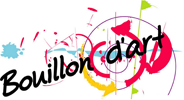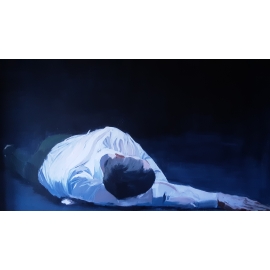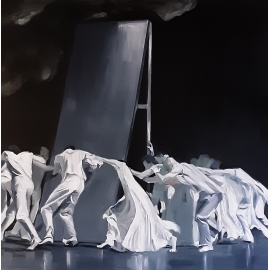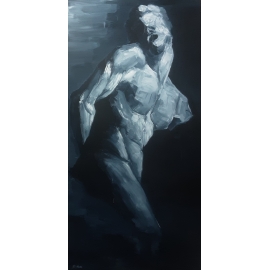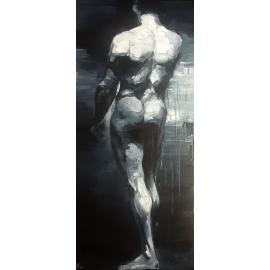No products
Product successfully added to your shopping cart
There are 0 items in your cart. There is 1 item in your cart.
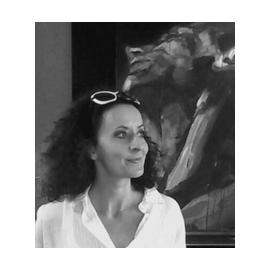
Agnès Doneau was born in 1967 in Angers. From her childhood, precursor signs manifested, foreshadowing an exceptional artistic journey that would mark her life and open horizons laden with a past to rewrite. The artist shared with us the very first "sign": "On that day, the weather was splendid at the beginning of November. I was playing on the ...
Agnès Doneau was born in 1967 in Angers. From her childhood, precursor signs manifested, foreshadowing an exceptional artistic journey that would mark her life and open horizons laden with a past to rewrite. The artist shared with us the very first "sign": "On that day, the weather was splendid at the beginning of November. I was playing on the porch when suddenly I heard the announcement of Pasolini's assassination on the radio. The journalist's voice is still vivid in my memory. I was eight years old. I stopped for a few seconds and felt the weight of generations, a feeling of death difficult to explain... 'a bit of time in its pure state.'"
As a child, Agnès Doneau spent her time scrutinizing the faces of those around her in search of what she calls "a little moment of truth." Initiated by her mother into drawing, colors, and the beauty of things, she also received a precious legacy from her two grandfathers, the cinematic image. The discovery of Pasolini's work at the age of 15 was a real shock and had a considerable impact on her life and graphic work.
Agnès Doneau pursued studies in fine arts to perfect her technique and continued with art history as part of an ERASMUS project that allowed her to discover the restoration site of the Duomo di Firenze, which was a "revelation" for her. She then specialized in painting restoration at the International University of Restoration in Florence and later passed the aggregation. Her profession as an art restorer allowed her to travel not only to splendid countries like Italy and the Middle East but also, for about twenty years, inside a painting, a fresco, to discover a story, the traces of thought in action, and thus engage in a conversation spanning centuries.
The ultra-fine brush of a Restorer No. 1 gave way to a spalter, allowing her to throw herself body and soul into immense canvases and devote herself more to painting.
Sensitive to Kierkegaard's notion of "repetition," her paintings in the first series of bodies seize the drawings of the Renaissance and Mannerism to infuse them with another life in a timeless space. It is no longer the drawing that takes precedence but indeed the painting, the gesture... This notion of repetition is beautiful because it affirms that the past experience is always a possibility. There is a reprise; the present seizes the past and the future... this timelessness is not reached through a nostalgic return to a bygone past but through a movement towards the future, a projection forward, a "remembering forward."
The choice of her subjects generally stems from an emotional, cinematographic, musical, literary shock, such as Gaudé's Eldorado, which was the trigger - a true awakening to the world - for her series on "Exiles." Literature anticipated what she would discover with horror in Sicily during a project. This vision of lost, stunned men has haunted her, making her realize that art in general cannot abstract itself from the tremors of the world...
"I see literature and restoration as an immense palimpsest, the world's memory, an infinite and dizzying sequence of quotations, permutations, recreations, reinterpretations, successive interventions across time."
Other sources of inspiration, such as the opening credits of Andrei Tarkovsky's "Ivan's Childhood," Kafka's works, films by Kurosawa, Dreyer, Erice, Kiarostami, Welles, Sokourov, Fellini, P. Pasolini, the Taviani brothers, or Nemec's striking film "Diamond Wedding," were the origin of a series on "movement" - the escape related to migrants... all sharing a poetic and spiritual power, where choreography, ritual, and ceremony are omnipresent.
For Agnès Doneau, expressiveness does not only come through representation but through plasticity, gesturality. The gesture reveals itself, adds a dimension, an additional meaning to the painting. The rapid, nervous gesture emphasizes movement, direct action on the canvas without a sketch, allowing her to get to the essential. "What fascinates me is the staging, how the canvases respond to each other. The images are assembled like sequences, shots to recreate a dynamic whole, a sort of timeless ballet transcribed in the pictorial field."
The signs: "To tell you that my life has been scattered with small signs that I have more or less captured. In Venice in 1990, I feel this moment of eternity facing the Correr Museum; six years later, I restore the frescoes and trompe l'oeil of the Museum... The day after the Fenice fire in 1996, I still feel that time weighing on me as I look at the window opening onto emptiness. In 2002, I restored the decorative ornament of the Theater... I could multiply examples."
Some restorations:
Hagia Sophia – Istanbul – Turkey (Mosaics)
The Great Mosque of the Umayyads – Syria (Mosaics)
Villa of the Mysteries – Pompeii (Frescoes)
Museo S. Marco – Florence
Palazzo Medici-Riccardi – Florence
Museo Correr – Venice
Teatro della Fenice – Venice
Exhibitions:
Gallery 360 Florence "Literature and Cinema" - Florence
Temple of Taste "The Exiles" Nantes
Contemporary Art Center 'One Way' Angers
Fine Arts Museum/Palais de l'Europe "The Aesthetics of the Body" - Menton
Depardieu Gallery "Urban Solitude" - Nice
Contemporary Art Center "Conversation on Homer" Angers
Discover the eXhibition 2024 at Bouillon d'art - Bordeaux
Gallery Words about Agnès Doneau
In September 2023, Agnès Doneau sent me an email to introduce me to her work. From the first look at her catalog, I held my breath, wondering what the next page could still reveal to me. Dynamism, music, score, literature—her plastic work has great musicality, strong messages that carry me away through the works. I contacted her by phone, excited about the idea of representing her. Everything is simple; as a humanist artist, she is in perfect harmony with her work, and there is a genuine desire for collaboration on both sides. I proposed an exhibition with sculptor Val Carr-Ortolan in January 2024. Both artists marvel at each other's works and are delighted to exhibit together. The harmony is perfect, and Agnès enters the gallery for our greatest pleasure.
DONEAU Agnès There are 11 artworks
- 6300 €
La Sfilata La Sfilata
Artist : Agnès DoneauAcrylic on canvash78.7x45.3x0.8 inch Artist : Agnès DoneauAcrylic on...
Available - 6300 €
Il grande colloquio Il grande colloquio
Artist : Agnès DoneauAcrylic on canvash78.7x45.3x0.8 inch Artist : Agnès DoneauAcrylic on...
Available - 6300 €
I Custodi I Custodi
Artist : Agnès DoneauAcrylic on canvash78.7x45.3x0.8 inch Artist : Agnès DoneauAcrylic on...
Available - 6400 €
Soulèvement des lucioles Soulèvement des lucioles
Artist : Agnès DoneauAcrylic on canvash78.7x51.2x0.8 inch Artist : Agnès DoneauAcrylic on...
Available - 6200 €
Lucioles frémissantes Lucioles frémissantes
Artist : Agnès DoneauAcrylic on canvash76.8x45.3x0.8 inch Artist : Agnès DoneauAcrylic on...
Available Luciole endormie Luciole endormie
Artist : Agnès DoneauAcrylic on canvash76.8x59.1x0.8 inch Artist : Agnès DoneauAcrylic on...
SoldDanza sacra Danza sacra
Artist : Agnès DoneauAcrylic on canvash78.7x78.7x0.8 inch Artist : Agnès DoneauAcrylic on...
Sold- 6900 €
Traccia di signorelli Traccia di signorelli
Artist : Agnès DoneauAcrylic on canvash100.4x47.2x06 inch Artist : Agnès DoneauAcrylic on...
Available Frammento del passato Frammento del passato
Artist : Agnès DoneauAcrylic on canvash100.4x47.2x06 inch Artist : Agnès DoneauAcrylic on...
Sold- 6900 €
Colloquio con barrias Colloquio con barrias
Artist : Agnès DoneauAcrylic on canvash100.4x47.2x06 inch Artist : Agnès DoneauAcrylic on...
Available Achille Achille
Artist : Agnès DoneauAcrylic on canvash100.4x47.2x06 inch Artist : Agnès DoneauAcrylic on...
Sold
